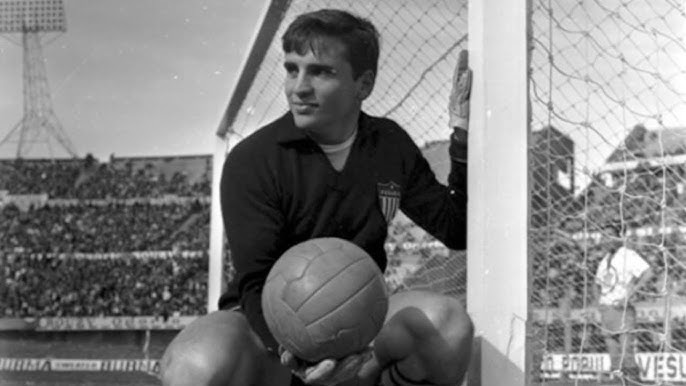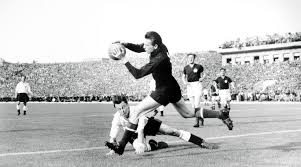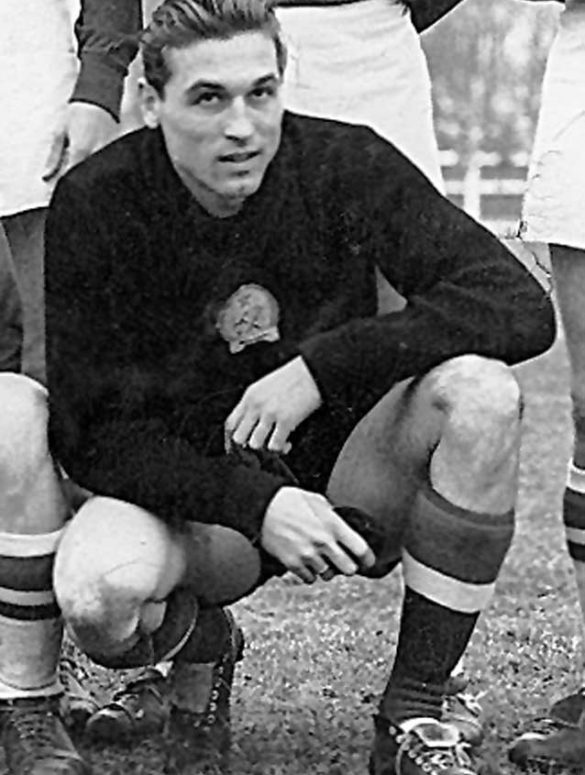
Gyula Grosics, nicknamed the “Black Panther”, is one of the most important and pioneering goalkeepers in football history. He wasn’t just a key part of Hungary’s legendary Mighty Magyars team of the 1950s, he also helped redefine what it meant to be a goalkeeper.
🏆 1. Career & Achievements
- Club Career
- Played for Tatabánya, Budapest Honvéd, and other Hungarian clubs.
- Despite political restrictions, he remained one of Hungary’s top goalkeepers for nearly two decades.
- International Career (Hungary)
- Earned 86 caps (1947–1962).
- Core member of the Golden Team that went 32 games unbeaten between 1950–1954.
- Won the Olympic Gold Medal in 1952.
- Reached the 1954 World Cup Final, losing narrowly to West Germany in the “Miracle of Bern.”
- Recognition
- Remembered as one of Hungary’s greatest-ever footballers.
- The Hungarian national stadium in Tatabánya was named in his honor.

🧤 2. What Made Him Stand Out
- Reflexes & Athleticism
His nickname, the “Black Panther,” came from his acrobatic leaps and sharp reactions. He often wore black, which made his presence in goal even more intimidating. - Composure Under Pressure
Even in high-stakes games — like Hungary’s famous 6–3 win over England at Wembley in 1953 — Grosics displayed calm, reliable handling. - Part of a Legendary Team
As the last line of defense behind Puskás, Kocsis, and Hidegkuti, he gave Hungary the confidence to play their revolutionary attacking style.
🔬 3. Innovations & Contributions
This is where Grosics truly stands apart — he was one of the first “sweeper-keepers” in football history.
- The Sweeper-Keeper Pioneer
- Unlike most goalkeepers of his era, who stayed glued to their line, Grosics was proactive and adventurous.
- He often left his penalty area to intercept long balls, acting almost like an extra defender.
- This allowed Hungary to push their defensive line higher up the pitch, creating space for their famous fluid attack.
- Quick Distribution
- Grosics emphasized fast throws and kicks to launch counterattacks, decades before it became standard practice.
- His ability to transition from defense to attack was crucial for Hungary’s free-flowing style.
- Positional Boldness
- He positioned himself higher up the pitch than traditional goalkeepers, cutting out through-balls before they reached opposing strikers.
- This was radical at the time — most keepers rarely left their six-yard box.

🌍 4. Cultural & Historical Impact
- Backbone of the Mighty Magyars
Grosics was as important to Hungary’s dominance in the early 1950s as their star forwards. His style gave them tactical flexibility. - Influence on Modern Goalkeeping
- His sweeper-keeper approach directly foreshadowed legends like Lev Yashin, Sepp Maier, and modern innovators like Manuel Neuer and Alisson Becker.
- Grosics helped prove that the goalkeeper could be more than just a shot-stopper — he could be an active participant in outfield play.
- Respected Despite Adversity
- He faced political persecution in Hungary due to false accusations of defecting, which restricted his career opportunities.
- Despite this, he maintained elite performances for over 15 years.
✅ In summary: Gyula Grosics is one of the greatest goalkeepers in history not just because of his reflexes and consistency, but because he was a tactical innovator. As one of the first true sweeper-keepers, he redefined the position, making the goalkeeper an integral part of a team’s tactical system. His role in Hungary’s Golden Team left a legacy that still influences the modern game.
Goalkeeper Glove Care
Extend your gloves’ lifespan and restore grip with KEEPER BALM. Trusted by goalkeepers worldwide.
It keeps goalkeeper gloves gripping like new, forever.